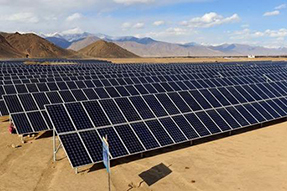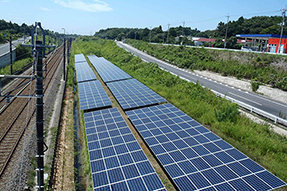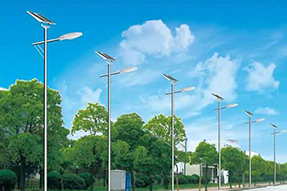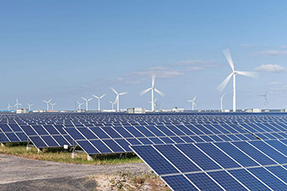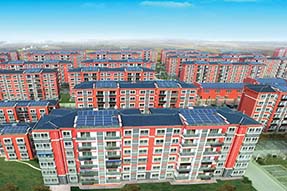There is a Large Potential Solar PV Market in Africa
Overall Condition for African Energy.
From current African energy consumption structure, the main energy consumption is biomass energy and fossil energy, the biomass energy dominates about 50%, Coal and Natural Gas are around 14% respectively, fossil oil is around 22%, while hydropower is just 1%.
The yearly increase rate of Africa’s energy supply is around 3%, which far surpass other Countries.
According to present situation, the economic development of different African districts have a big different for energy demand.
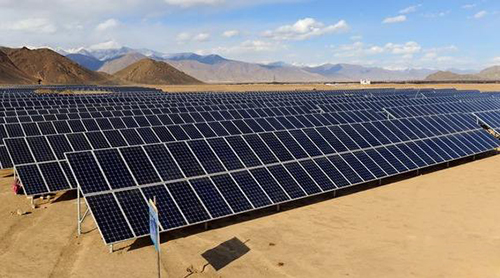
The African Population is 15% of global, nearly 0.6 billion population still lack of electric power.
The GDP per capita of North Africa is higher more than 3 times of other districts, only around 2% population lacks of electric power. Contrarily, there are 53%, 77%, 75% and 57% population to lack of electric power in West Africa, East Africa, Middle Africa and South Africa respectively.
From average power consumption, North Africa is nearly 8 times of whole Africa.
Africa’s Countries always cut off electric power annually, The power infrastructure is dramatically insufficient in the South of Sahara. There are eleven Countries to have more than 10 times for power cut-off annually, even five Countries have cut-off power more than 20 times each month.
The power cut-off is average 4.6 hours each time in the South of Sahara, there are more than 17 Countries to cut-off power more than 4.6 hours.
The economic loss which is caused by shortage of power has reached 4% of Africa’s GDP (the key renewable revolution is population increase, according to the World Bank’s anticipate, population would reach 10.25 billion in beginning of 22th Century, its actual population increase is 67% comparing 2001, the Developed Countries decrease 54%, Developing Countries increase 84.5%, the large population increase of Developed Countries would continue to the beginning of 22th Century). The large portion shortage of electric power and dramatically uneven power demand have presented that the potential energy development is very huge.
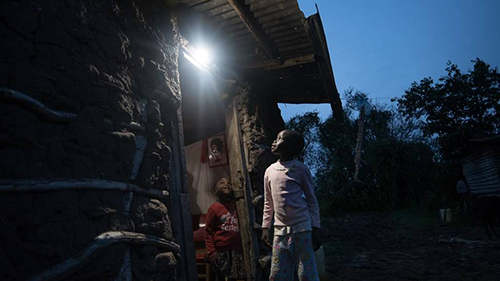
Although Africa’s fossil energy has abundant storage, it is limited. According to IEA’s prediction, up to 2015, the reserve and production ratio of Africa’s fossil oil, coal and natural gas respectively are 42.8 years, 69.8 years and 122 years, while the existing of renewable energy is very large, especially for solar power, which is forever existing.
Regarding to renewable energy, the Middle Africa is mainly Hydropower and geothermal energy, the exploitation of solar energy is very promising in North Africa and South Africa. The average solar radiation has surpassed 1150KWH/m^2 annually in African continent. The average solar radiation of 39 Countries have exceeded 2000KWH/m^2, Namibia has reached 2512KWH/m^2 (By contrast, presently, Namibia’s solar installation volume is just 21MW).
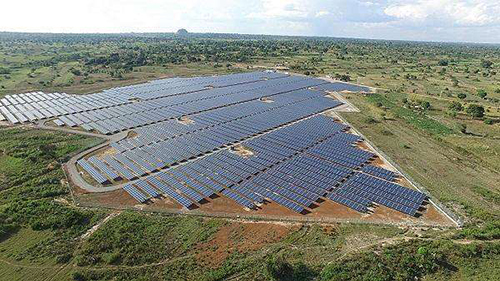
The driving factor of Africa’s renewable development is mainly as below:
1. The political and Economy are sustainable to be stable (Most of Africa’s Countries have a stable politics, such as South Africa, Egypt, Ethiopia, Eritrea, Kenya, Zambia, Mozambique, Algeria, Tanzania, Namibia, Morocco, Bosswana and Senegal).
2. The progress of urbanization is increasing, population increase, the urgent demand for shortage of infrastructure, Industrialization process to increase the demand for electric supply, the cost of renewable energy is decreasing, etc.
For example, for South Africa, its Ministry of Transport, Peters said “the Government of South Africa pay high attention to renewable development, definitely declared the target that the power generation from renewable energy would reach 42% of total power generation up to 2030. Morocco Government have made the plan that the renewable energy installation volume would reach 50% of total power generation up to 2030.
According to the research data from IEA and African Union, comparing with 2012, the renewable demand would be more than 4 times in the future of 2040, which indicates that the promising market is large to exploit renewable energy.
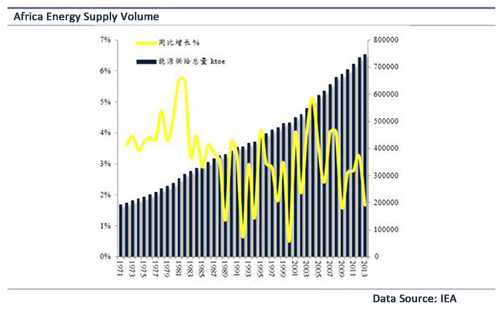
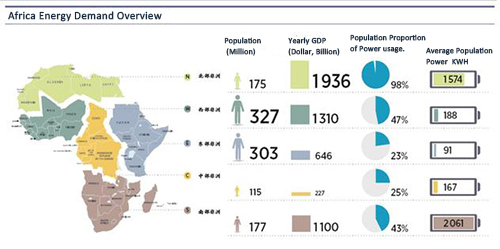
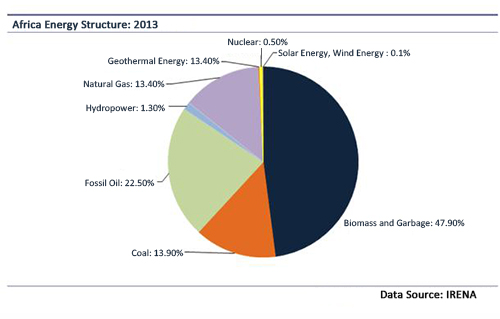
Recent years, the solar pv industry has got rapid development in Africa.
Recently, African solar PV industry is still in the initial period, market space and development potential are very large. Up to the bottom of 2015, the accumulative solar installation volume is 2100MW in Africa (the newly increase installation volume is 751MW in 2015), which is 15 times of accumulative installation volume in 2009.
It is worth pointing out that the main factors of rapid development of African installation volume is that South Africa greatly develop solar PV industry.
Under the plan of “Renewable Energy Individual Generation Scheme”, the Solar PV development of South Africa is very fast, its total solar installation volume (710MW) dominates 95% of newly increase in 2015 in Africa. Besides above two Countries, there are also large solar PV market in Mauritius, Uganda, Tunisia, Namibia and Egypt.
At the same time, the cost of Africa’s solar module has decreased 75% from 2009 to 2015, its power cost is also decreased. According to IRENA’s data, Africa’s power cost was US$0.13-US$0.24/KWH in 2013 and 2014, while this cost is lower than US$0.075 in 2015. Regarding to construction cost of electric station, different type of electric station has different construction cost.
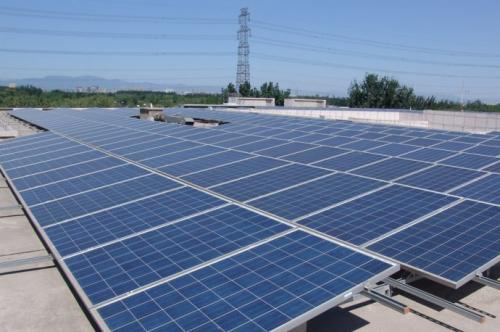
It can be expected, with technology improvement of solar pv industry and Africa’s PV market being opened gradually, the upstream, middle stream and downstream of solar pv industry would further sustain to decrease.
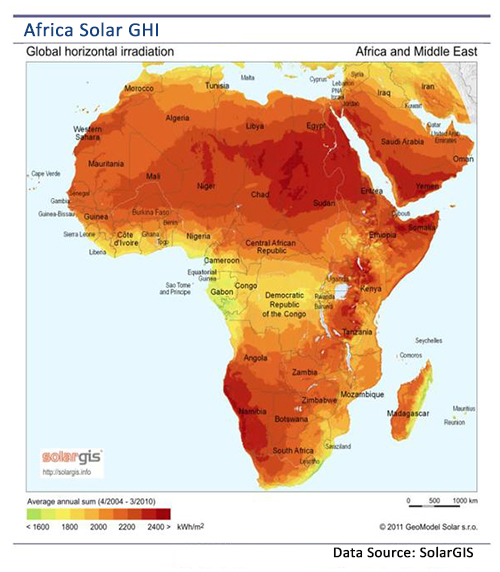
The future of Africa solar PV Industry.
According to IRENA’s relative research, Africa’s accumulative solar installation volume would get through 70GW up to 2030.
The solar installation volume of South of Sahara and South Africa dominate respectively 40% and 70% of whole Africa’s solar installation volume, this area is main market for solar PV development. Up to 2040, the accumulative solar installation volume would respectively reach 10GW, 4GW and 19GW in West Africa, East Africa and South Africa, which is respectively 21%, 8% and 40% of whole solar installation volume in Africa.
There is worth to point out that the accumulative solar installation volume of South Africa would reach 15GW before 2040, it would reach 12GW in Nigeria.
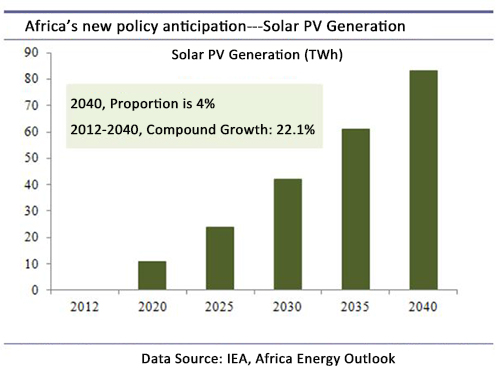
In a word, presently, Africa’s solar PV market is still in initial period, still waiting for exploitation, having a huge market space.
With the technology maturity of solar PV industry, various advanced technology is applied, cost is decreasing, and energy demand is increasing. Africa’s solar PV market would be attractive many solar PV Companies, including China’s Companies to invest. Africa solar PV industry would bring widely developing period in some period of future.
Bingsolar Power, 29th, May, 2018
